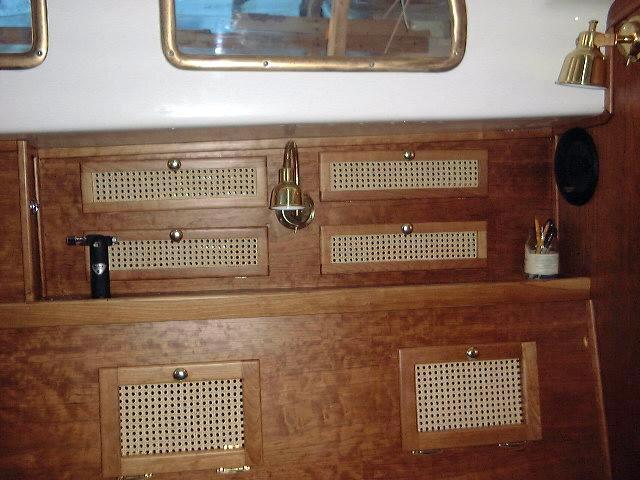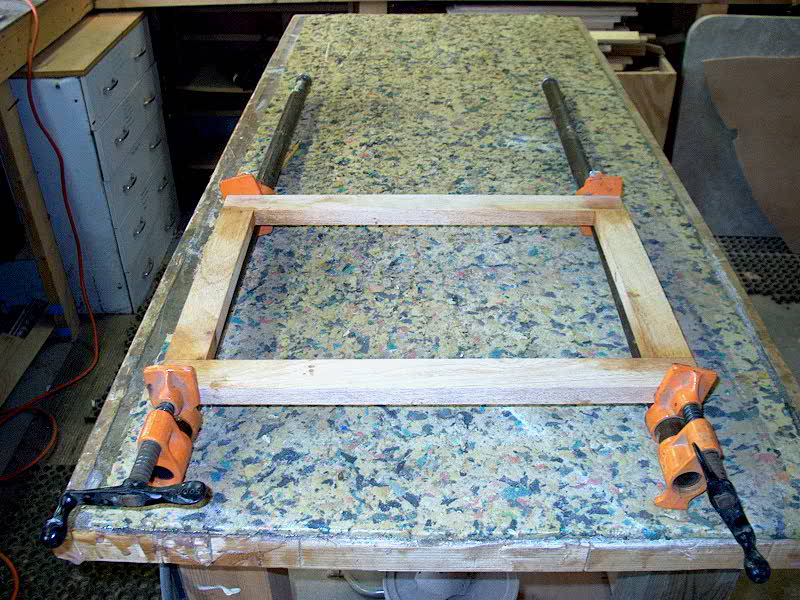I hate winters even in the temprate Northern California. It's not that it is cold here or wet (this year is drier than usual) it's the days are so short. It seems that no sooner than I get my tools out and set up the work space the sun is already hanging low on the western horizon. Sorry that is not why I am writing so let me get to it...
The galley/saloon project is moving sloooooowly forward and the scope seems to be expanding ever so slightly that it just seems like I will never get it done. I am now at a point where I am enclosing the shelf area above the port settee to creat a electrical panel area on the left end and a small cabinet on the right end. I am planning to make caned cabinet doors not unlike the ones that Tim, Ray Alsup, and Jim Bissonette have done. I think they are both attractive and functional (helps ventilation).


* Courtesy Triton381.com and Tritonclass.org.
The question I have is how to attach the prewoven cane sheet into the door frame. I have read Tim's description -
More specifically, I would like to know if in cutting the spline grooves on the table saw the groove should go from end to end of the door frame and if so, will the end of the groove be visible from the edge of the door. If not, how could that be achieved (it will seem that it is impossible to stop the table saw cut right before the end of the frame)?I installed the caning in the larger doors by first cutting the caning slightly oversize, then wetting it by briefly immersing it in water. The installation involved pressing the cane into the spline grooves with a wedge (I made the mistake of not ordering dedicated caning wedges for this, so I improvised with several tools on hand--the most effective was a school-type protractor). Once the caning was pressed into the groove, I applied a bead of glue and then hammered the spline into place with a rubber mallet. I left the excess caning and spline overhanging until the glue dried, when I trimmed it off with a utility knife and wood chisel. As the wet caning dried, it shrank somewhat, leaving a drum-tight surface. The process went fast once I had figured out a few tricks to make it easier for me.
Secondly, I bought reed splines that is specified for 3/16 grooves. I don't imagine that I will be able to cut exactly 3/16 grooves using Tim's method of running the frame through the table saw twice. How important is the fit between the reed spline and the groove? How much give and take can I expect?
Thirdly, can woven canes be varnished? The material I bought is very light color and I would like to varnish it (with Cetol) to darken it a bit. Is that doable?
Thanks you all in advance for your help.
Best regards,


